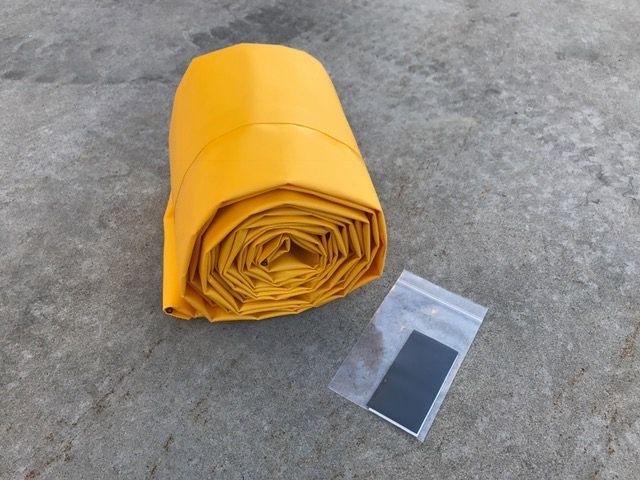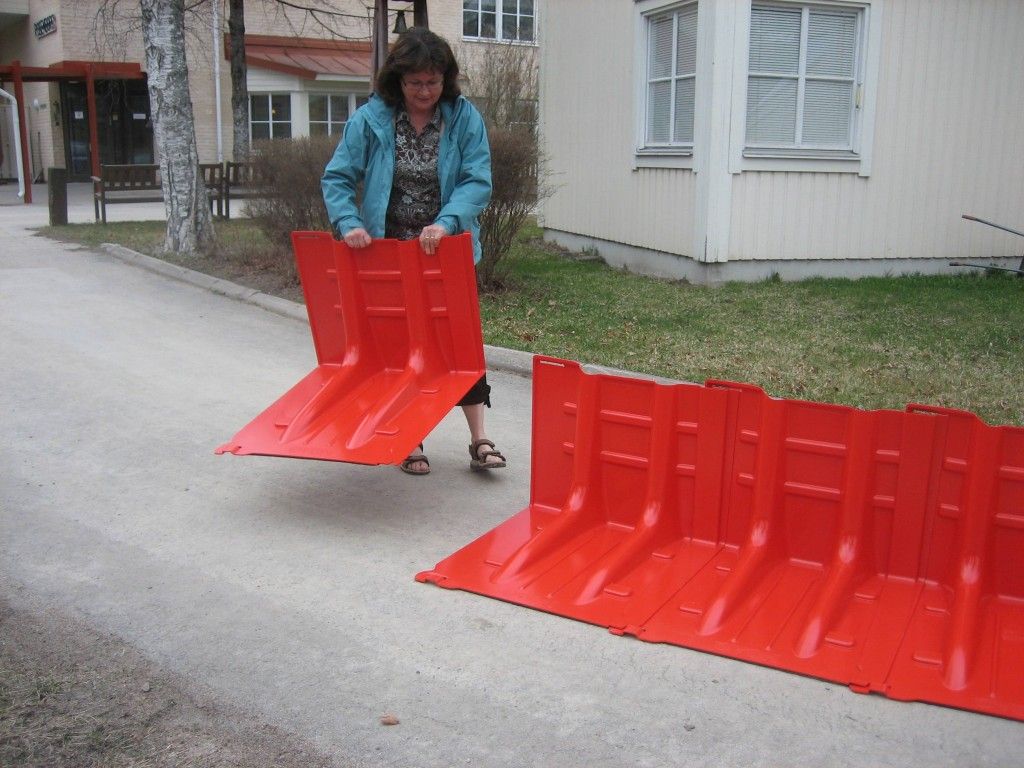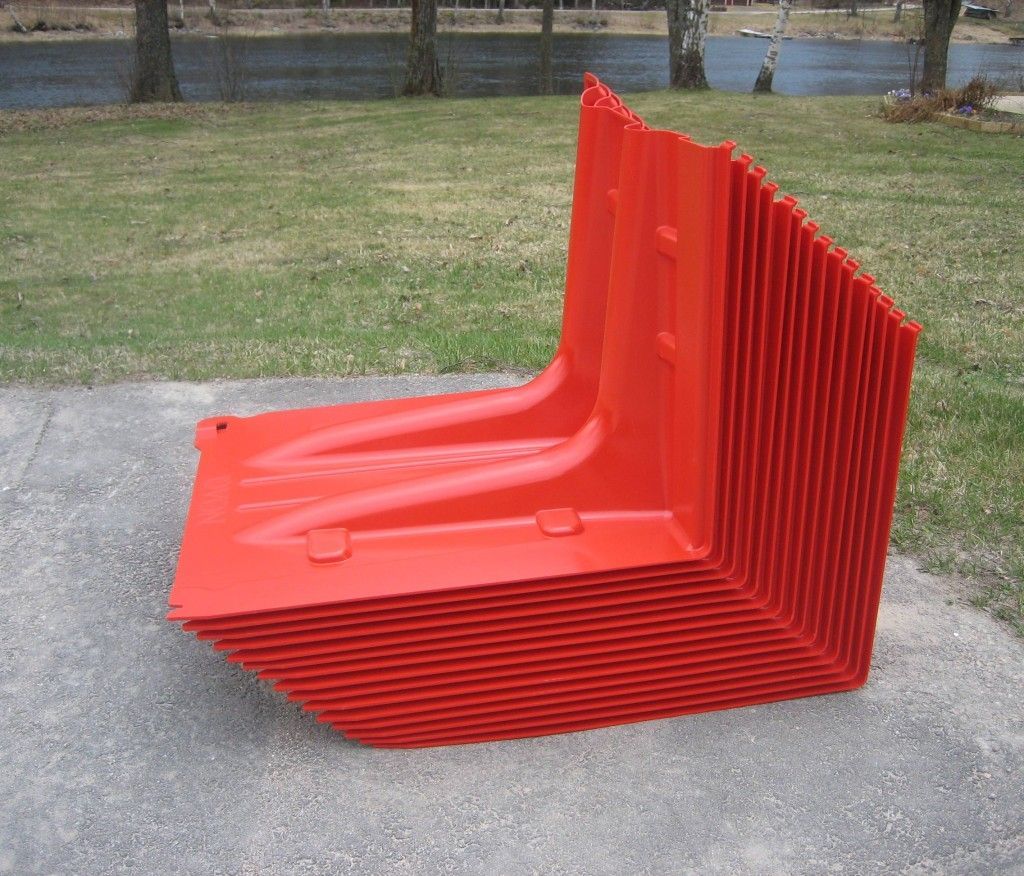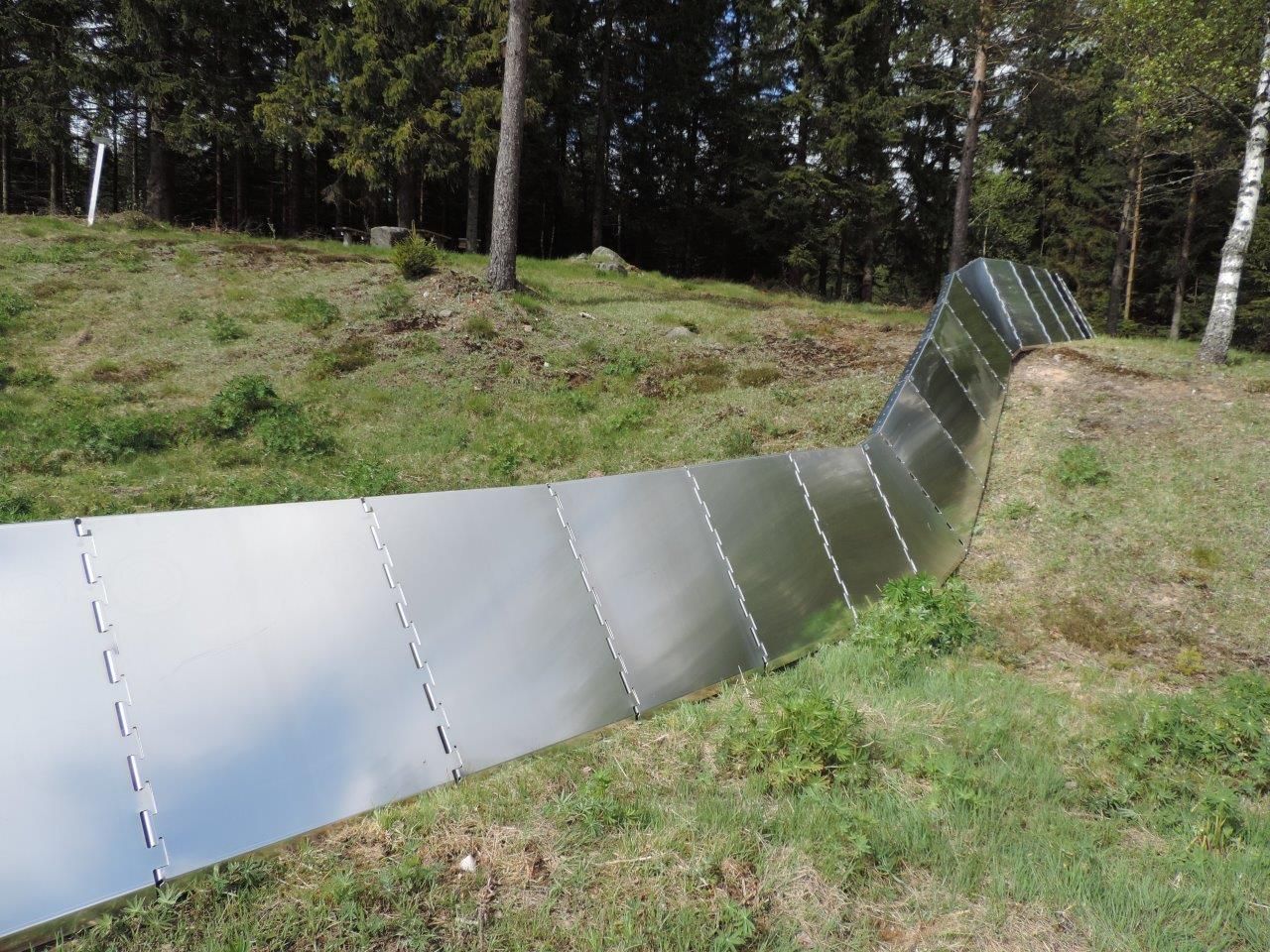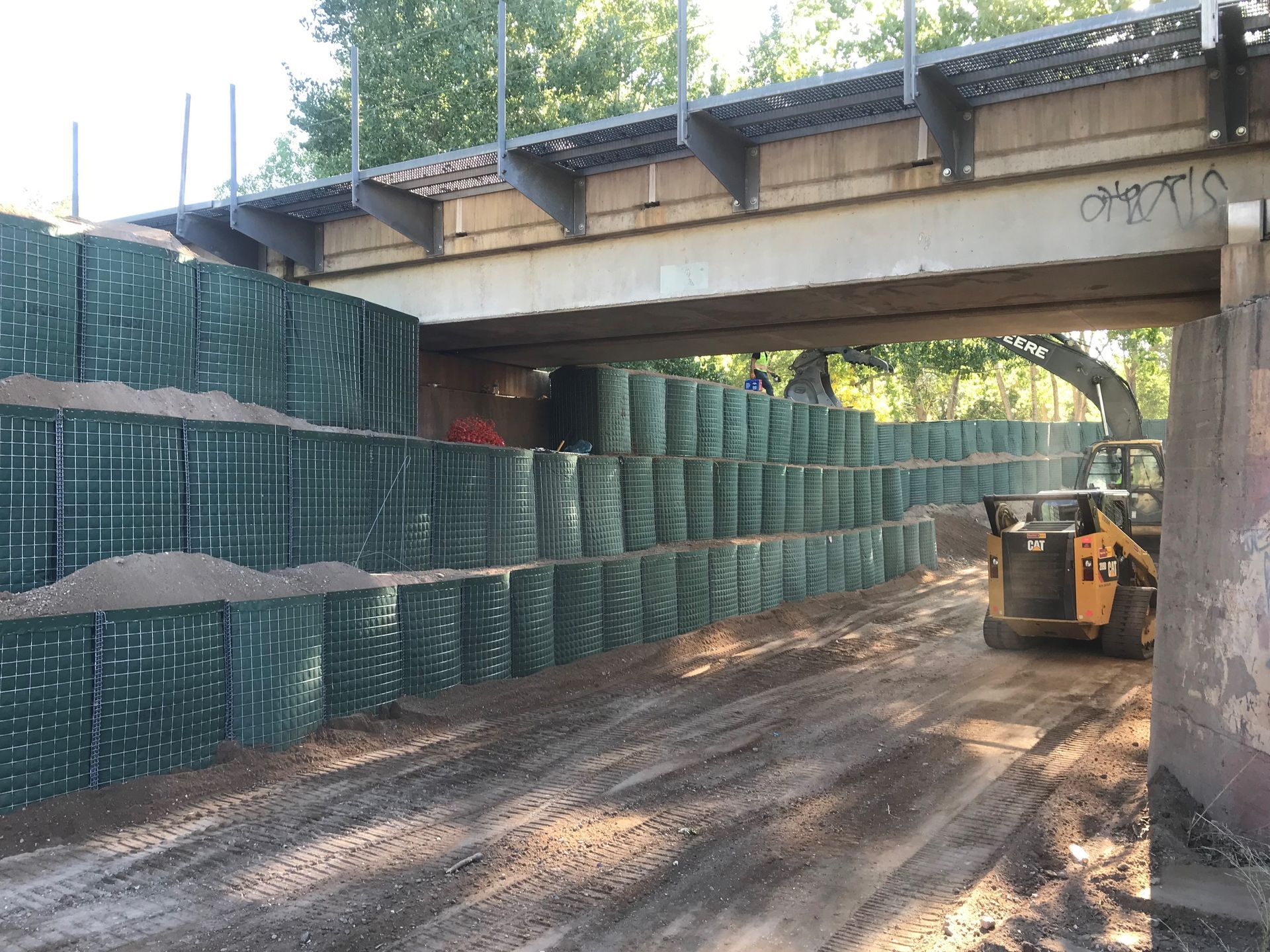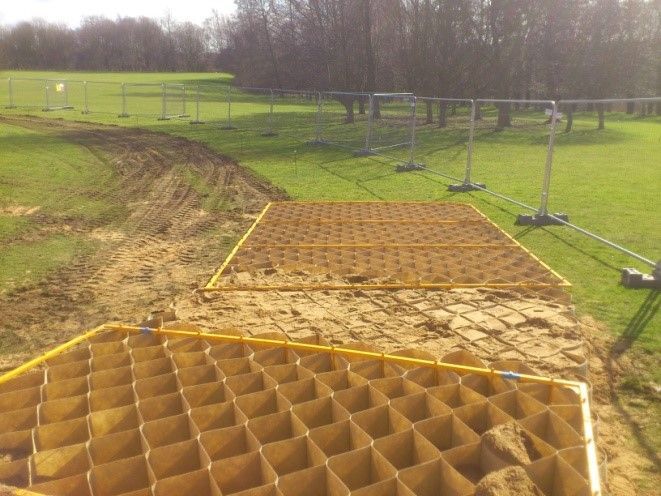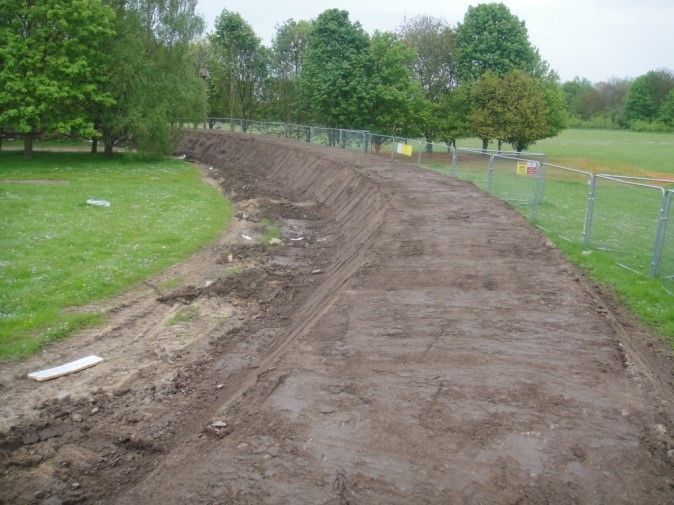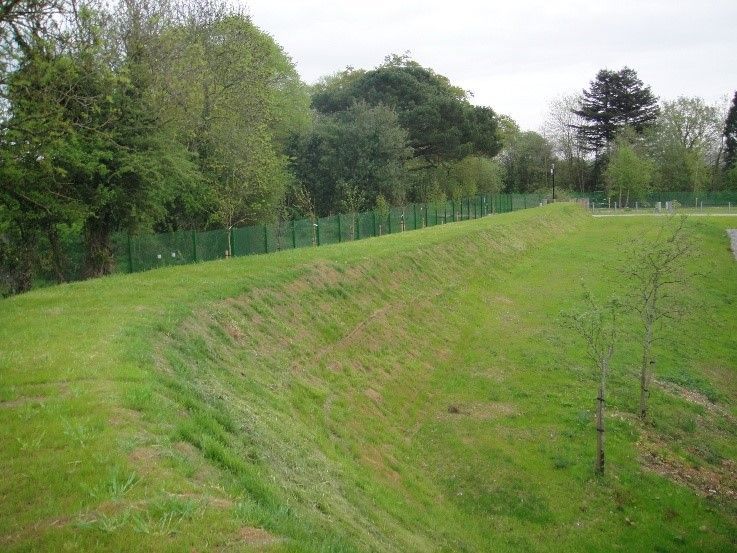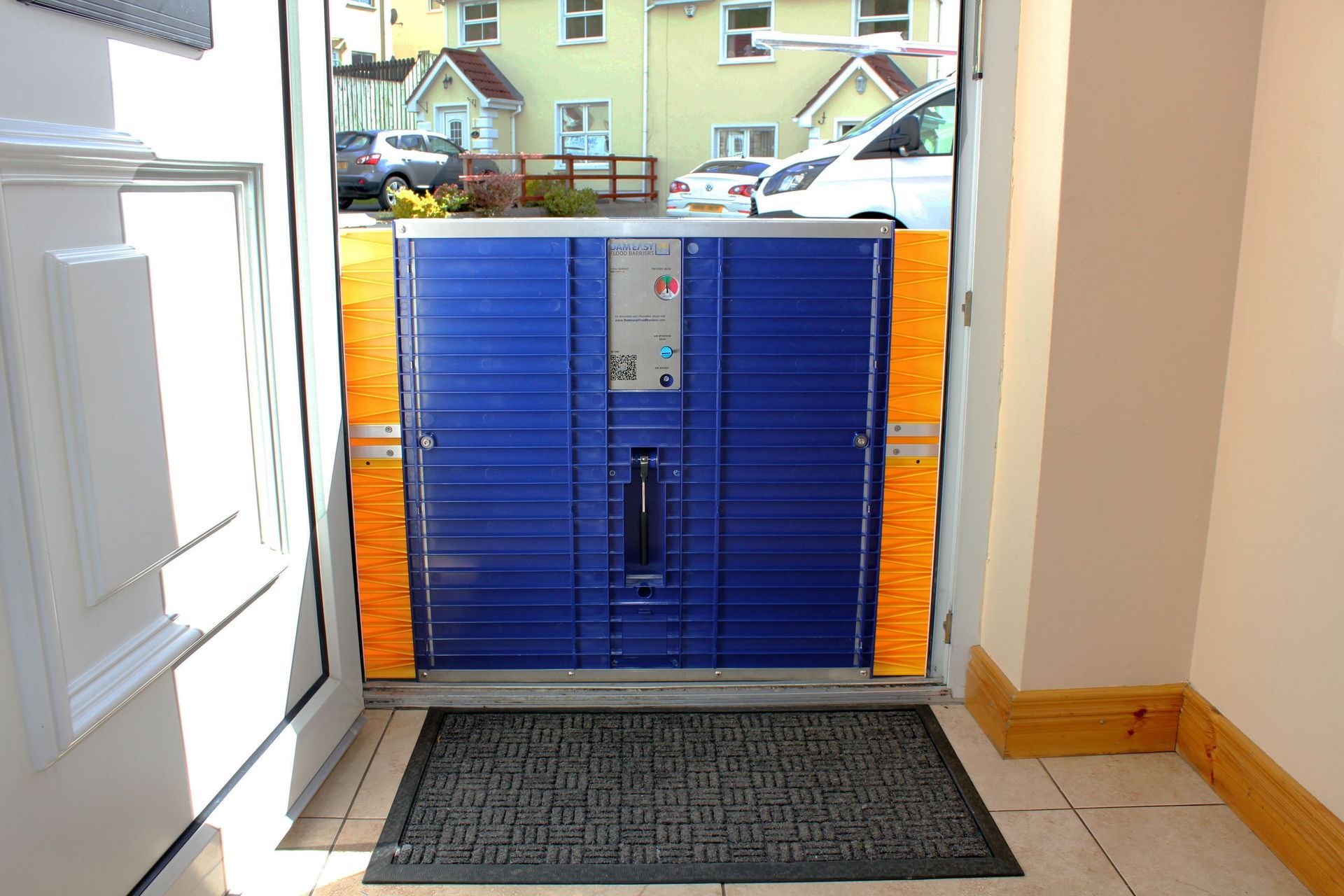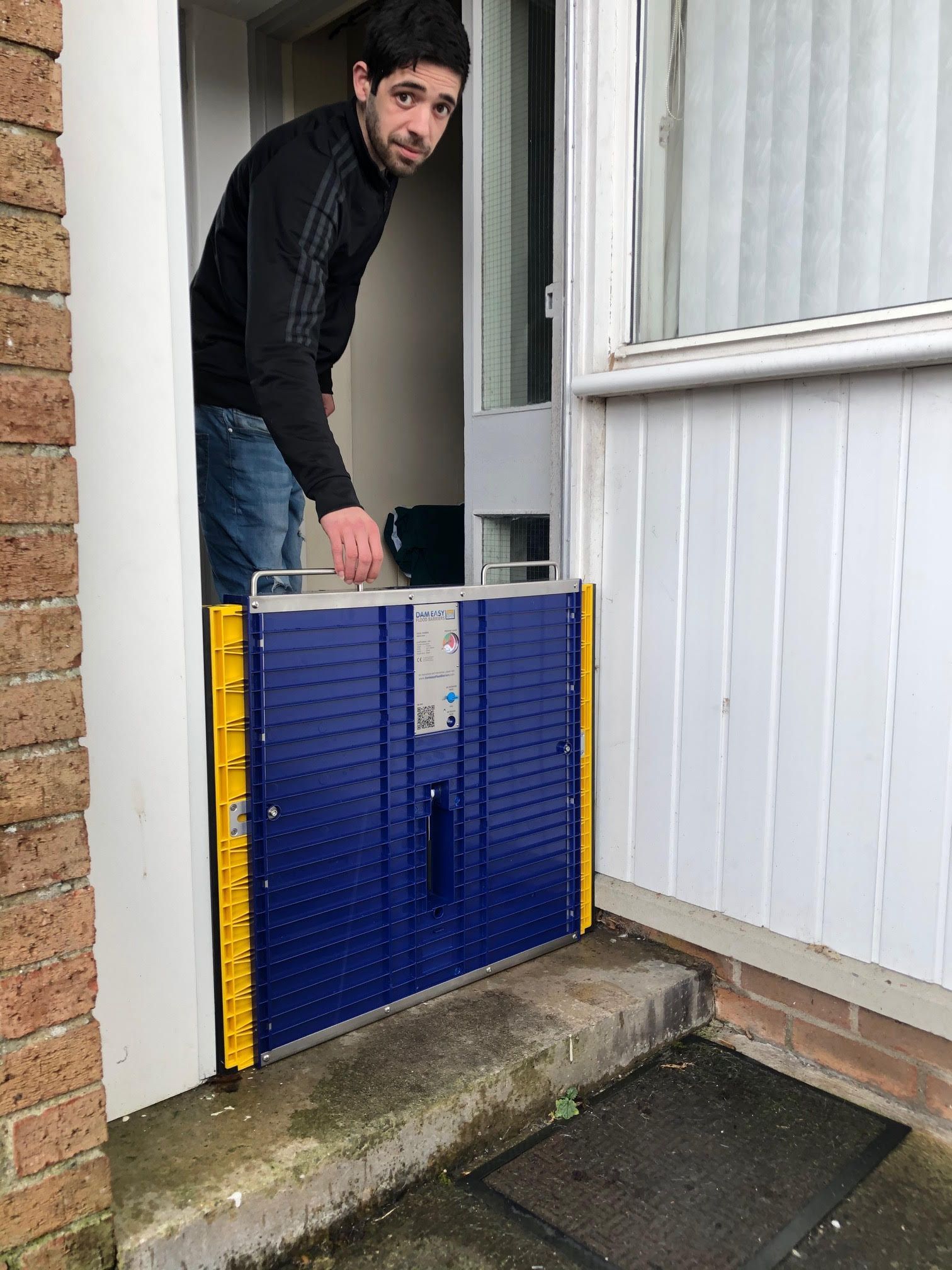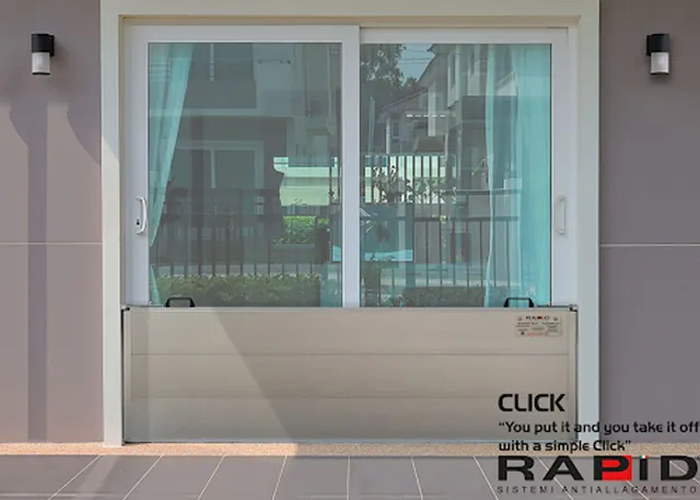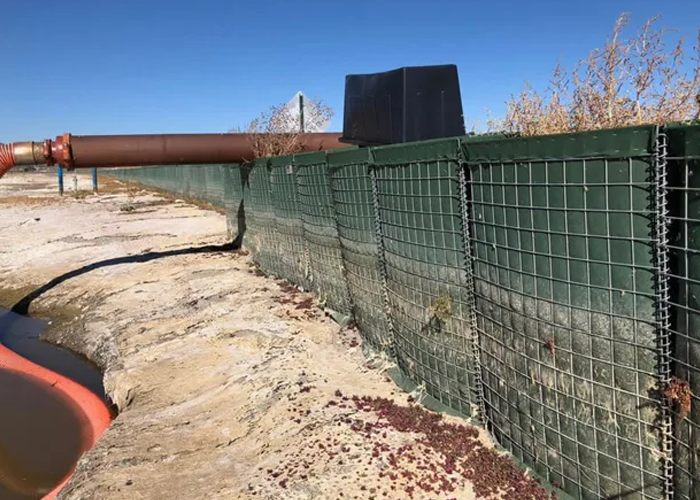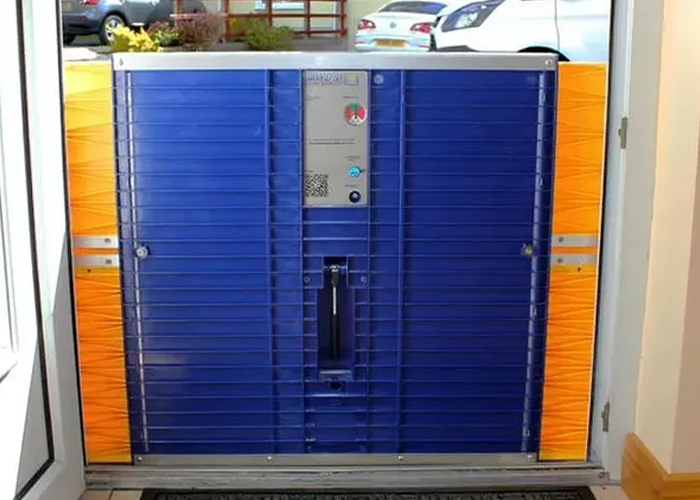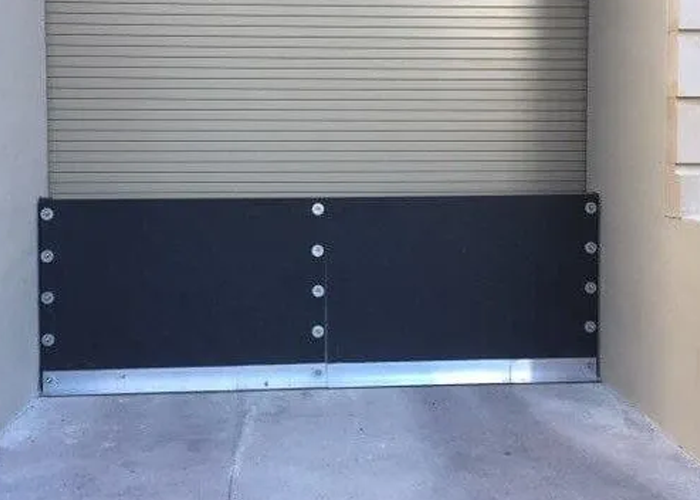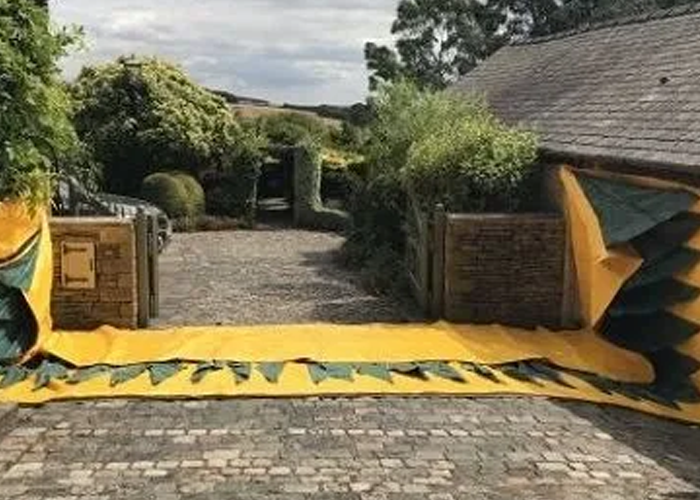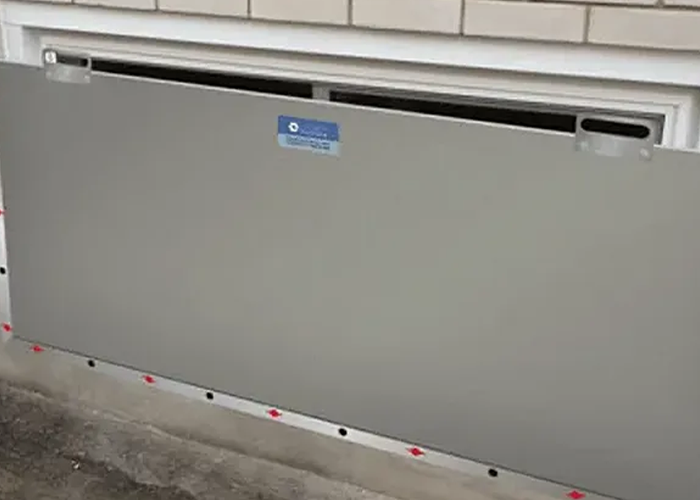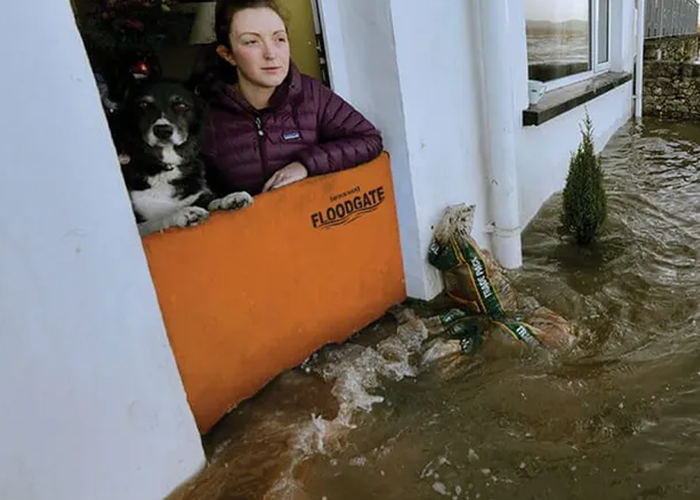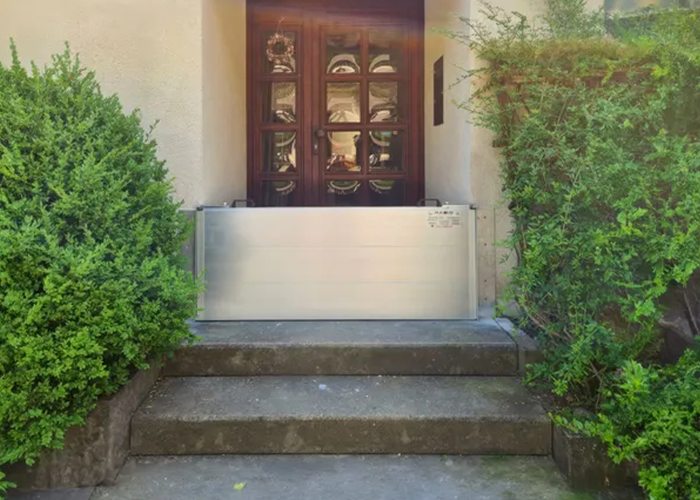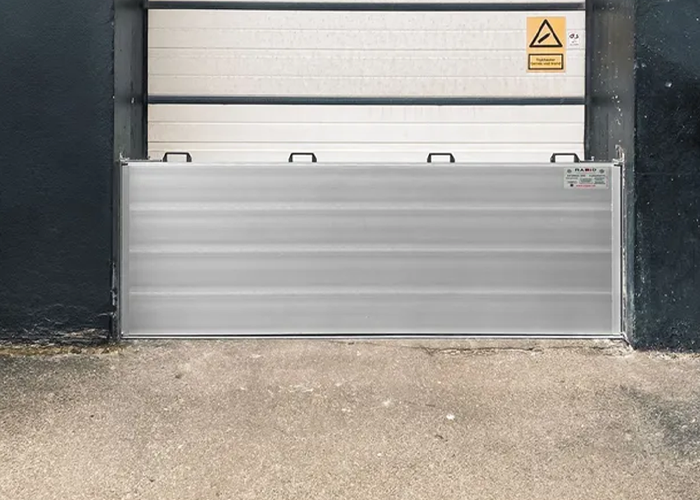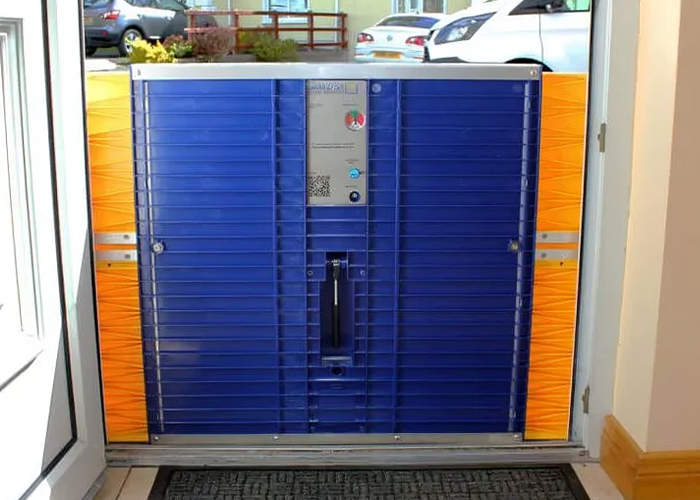What Type of Flood Barrier Works Best for You?
Introduction:
It can be a cumbersome task finding the best flood barrier for your unique situation when every flood barrier provider you speak to will commonly claim that they have the best flood barrier. In reality, there is no ‘best flood barrier’ because every situation is different. This leaves the consumer in a lonely position of trying to weed through numerous flood barrier options and differing messages of what flood barrier works best to protect their home from flooding.
This is why Flood Defense Group has amassed the largest collection of flood barrier designs in North America, because we understand there is no ‘best flood barrier’ for every situation. We understand that the best flood barrier for your unique situation may depend on a large variety of factors.
These factors may include:
- What is the depth of flood water?
- What is the reaction time to the arrival of flood water?
- What type of building surfaces the flood barrier will sit on?
- Can the barrier fit into proposed location?
- How long will the flood barrier be in place?
- How easy or difficult is the flood barrier to deploy?
- Do you need a reusable flood barrier?
- What are the logistics of shipping, deploying, and storing your flood barrier?
- Can you afford a particular flood barrier system? Are there alternative solutions that are more affordable?
- And more…..
Below, is our feedback on the variety of designs and products on the market where we break down the pros and cons of the various systems available.
Water Filled Flood Barrier Designs
Water Filled Flood Tubes
There are a variety of options when it comes to this type of design and some designs are certainly better than others! Some of the popular options on the market include the Aqua Dam, Tiger Dam, Aire Diversion tubes, and NoFloods Flood Tubes. The primary selling points to these products are that water fill material is cheap and easy to fill. They conform to the ground nicely, and these barriers are generally less expensive compared to more rigid and robust barriers.
Pros
- These designs are the least expensive options on the market
- Water fill material is inexpensive, generally easy to fill/empty, and does not leave a mess
- These products conform nicely to inconsistencies on the ground creating a better seal than rigid barriers
Cons
- Easily damaged from airborne or waterborne debris impact which can result in catastrophic failures from damage
- A single line of water tubes is prone to rolling or movement. This is especially true when exposed to wave impact or terrain that is not level. If wave impact is expected, we like systems that have two tubes side by side and connected for added stability like NoFloods which, however, do not have a long-life span against UV rays.
- A single line of water tubes should be reinforced from rolling with heavy objects like sandbags
- Not all water tubes are as reusable as manufacturers may claim. This often depends on what the tubes are made of. If you want a reusable water filled flood tube, we believe it needs to be comprised of a PVC coated fabric (similar to white water rafts) and NOT woven materials (similar to sandbags) as an outer layer with tubing inside (similar to a waterbed).
Woven Fabric Water Tube – Failure due to UV-Rays
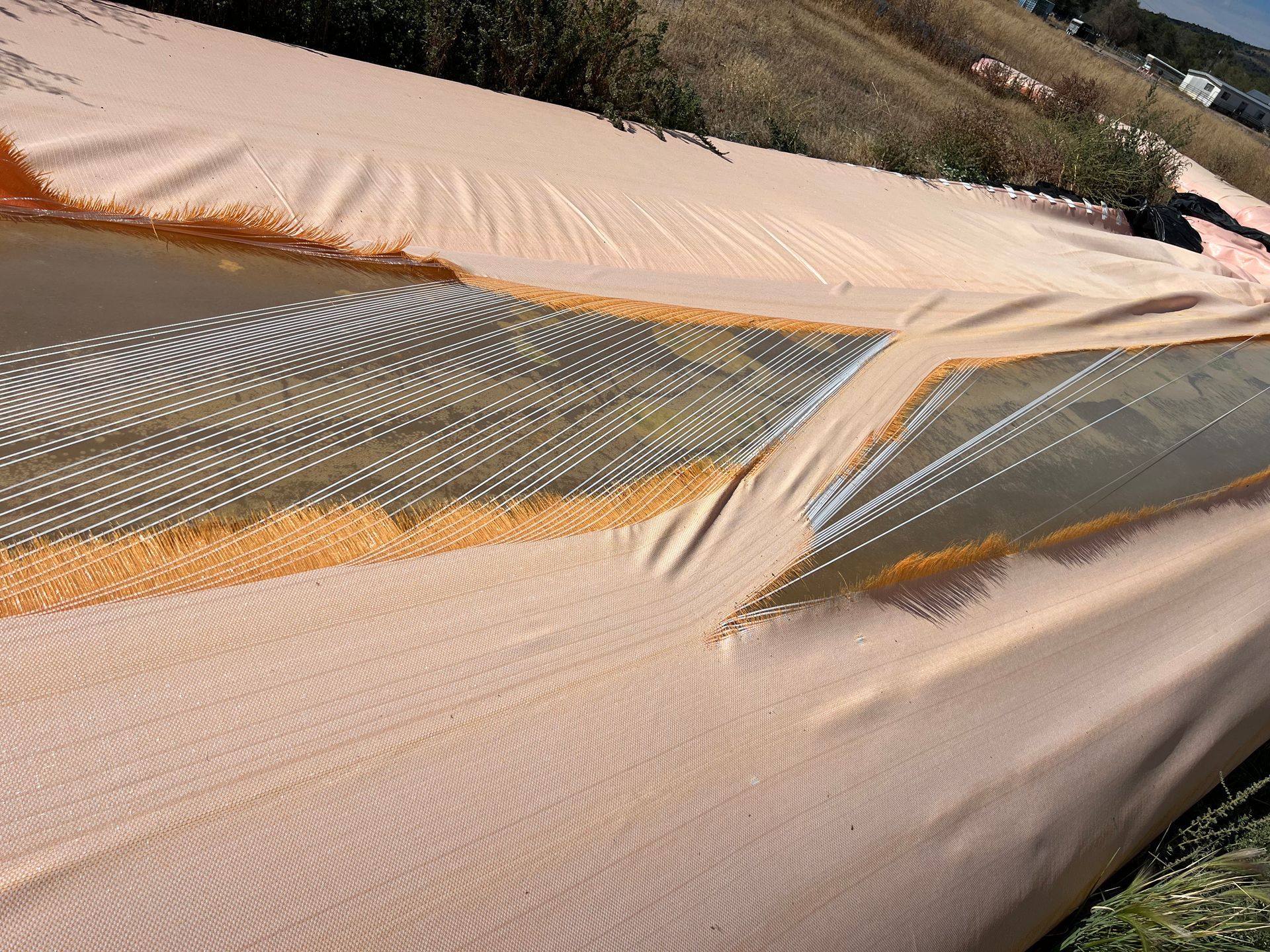
Muscle Wall Flood Barrier
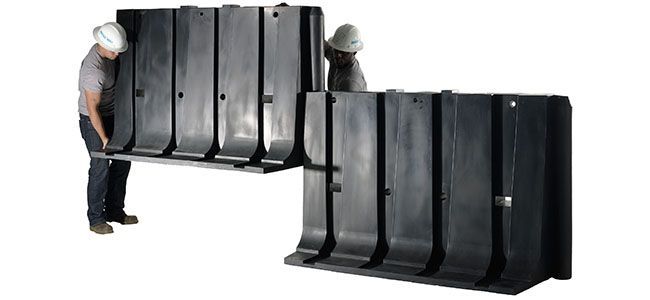
This product earns its name and is our clear favorite ‘water filled flood barrier’, that is completely reusable for violent situations like hurricanes conditions, mud flows, or debris impact. This flood barrier design also has an 8’ tall option with the bragging rights of having the tallest, completely reusable option on the flood barrier market without a requirement to bolt it to the ground. This barrier is tough, which is especially true when comparing it to other water filled flood barriers on the market. It is great a great residential flood barrier as well as being a popular commercial flood barrier with a variety of uses.
Pros
- Sizes range from 6” to 8’ tall
- Tallest water filled temporary flood barrier on the market
- Most robust water filled temporary barrier on the market
- The design uses the weight of the incoming floodwater for added strength and stability
- Only water filled barrier we would expect to withstand wave impact, debris impact, and debris flows
- Long life span with 10 year warranty against UV degradation
- This product has passed the flood barrier testing with the USACE
Cons
- Somewhat ‘clunky’ and requires above average space for storage
- They are somewhat expensive to ship
Air Filled Flood Barrier Design
NOAQ Tubewall
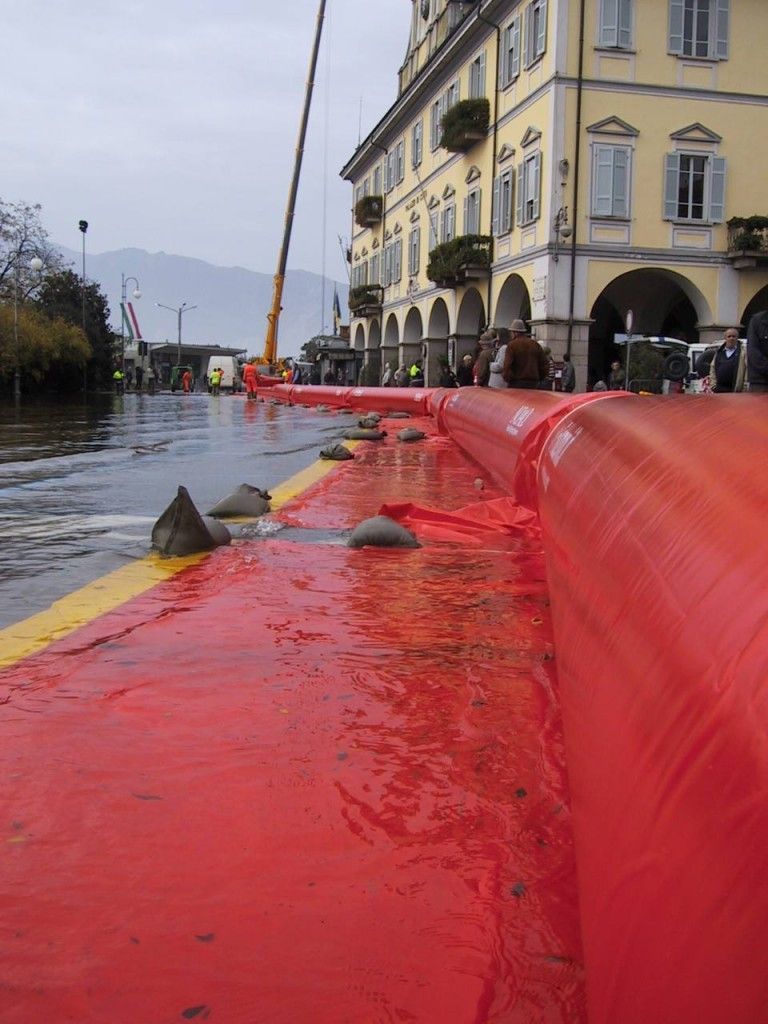
This flood barrier product is simple and effective and consists of a large air-filled tube that is attached to a ‘skirt’ comprised of a PVC membrane that sits on the ground and conforms well to undulations or inconsistencies. As the floodwater arrives, the weight of the flood water on the skirt, which anchors the product to the ground.
Pros
- Entire sections of the NOAQ Tubewall flood barrier can be linked together and filled with an air compressor from a single location
- Air in an inexpensive and readily available fill material
- The ‘skirt’ attached to the tube creates a great seal to the ground, even on undulating terrain
- Logistically friendly to roll up and pack away without residual water weight commonly found with water filled water tubes
Cons
- It is comparatively expensive to other types of flood barriers
- Vulnerable to failure from debris impact from floating or flying debris
- Vulnerable to movement from high winds similar to hurricane conditions
- Long lead time to delivery with upfront payment required
- Individual sections are somewhat heavy depending on length and height of protection required
Free Standing Flood Barrier Designs
DESCRIPTION: These types of flood barrier designs do not require any sort of fill material at all and use the weight or downward pressure of the incoming floodwater to further anchor itself to the ground.
NOAQ Boxwall Removable Flood Barrier
This flood defense barrier is immediately effective against incoming floodwater, and is the fastest to deploy on short notice. It is lightweight, super effective, and stacks away nicely into a corner of your garage or even a closet between uses.
Pros
- Easily considered the most popular residential flood barrier on the market
- No fill material required – Anchored by the weight of the incoming flood water
- Stacks away like chairs to make it logistically friendly to ship, store, and move around
- Lightweight design makes it simple and easy to deploy for people of all ages
- Flood Defense Group will purchase this product back for any reason
(ask for details)
Cons
- Lightweight design can make it susceptible to movement from high winds which is easily mitigated against by placing a sandbag on the toe of the unit for added weight when water is not against it
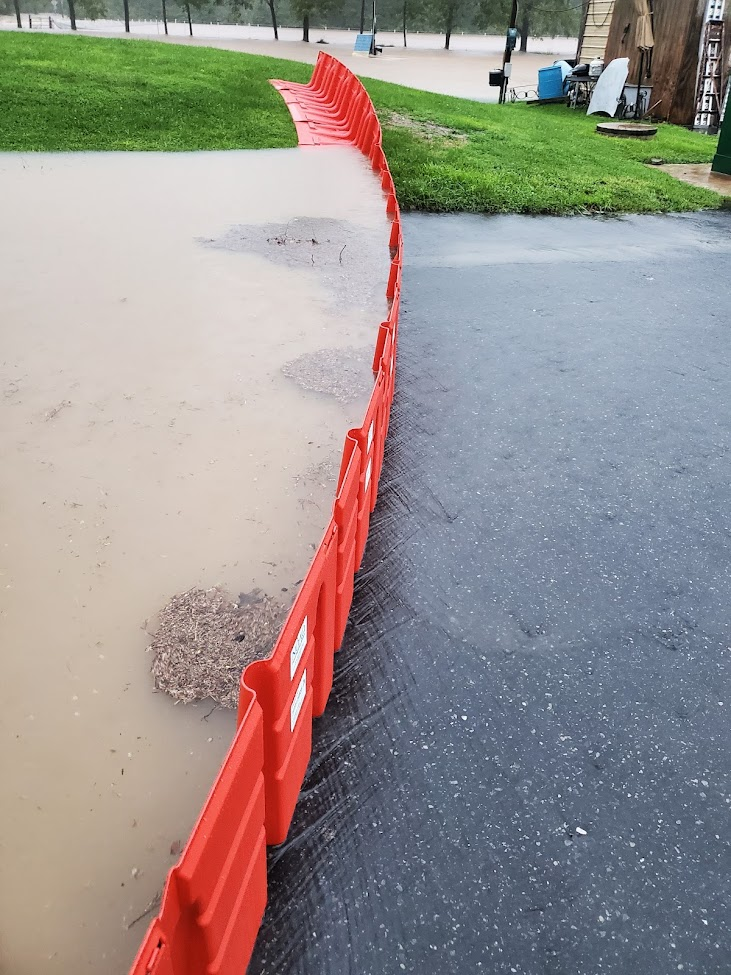
Geodesign Flood Barrier and Alteau Mobile Flood Barrier
If you are looking for a temporary flood barrier that will last a lifetime, this design is a winner. Because they are made of metal, they are extremely robust. This makes them great for arctic conditions, oil and gas facilities, or construction sites with potentially careless employees who may otherwise damage a plastic barrier by simply throwing them around. This product also packs away nicely, making them a great option for the residential market as well.
Pros
- Steel and/or Aluminum composition truly ensures that these barriers will last a lifetime
- No fill material required which saves time and money during deployments
- Fast to deploy and recover
- Packs away nicely making it logistically friendly
- They are tough flood barriers!! This helps them to withstand potential damage from debris impact, freezing temperatures, UV exposure, and/or careless workers who may be inclined to throw it around during deployment
- Great choice for arctic conditions, construction sites, regular deployments, and long-life spans
Cons
- These products are on the more expensive side of cost
Airfoil Designs
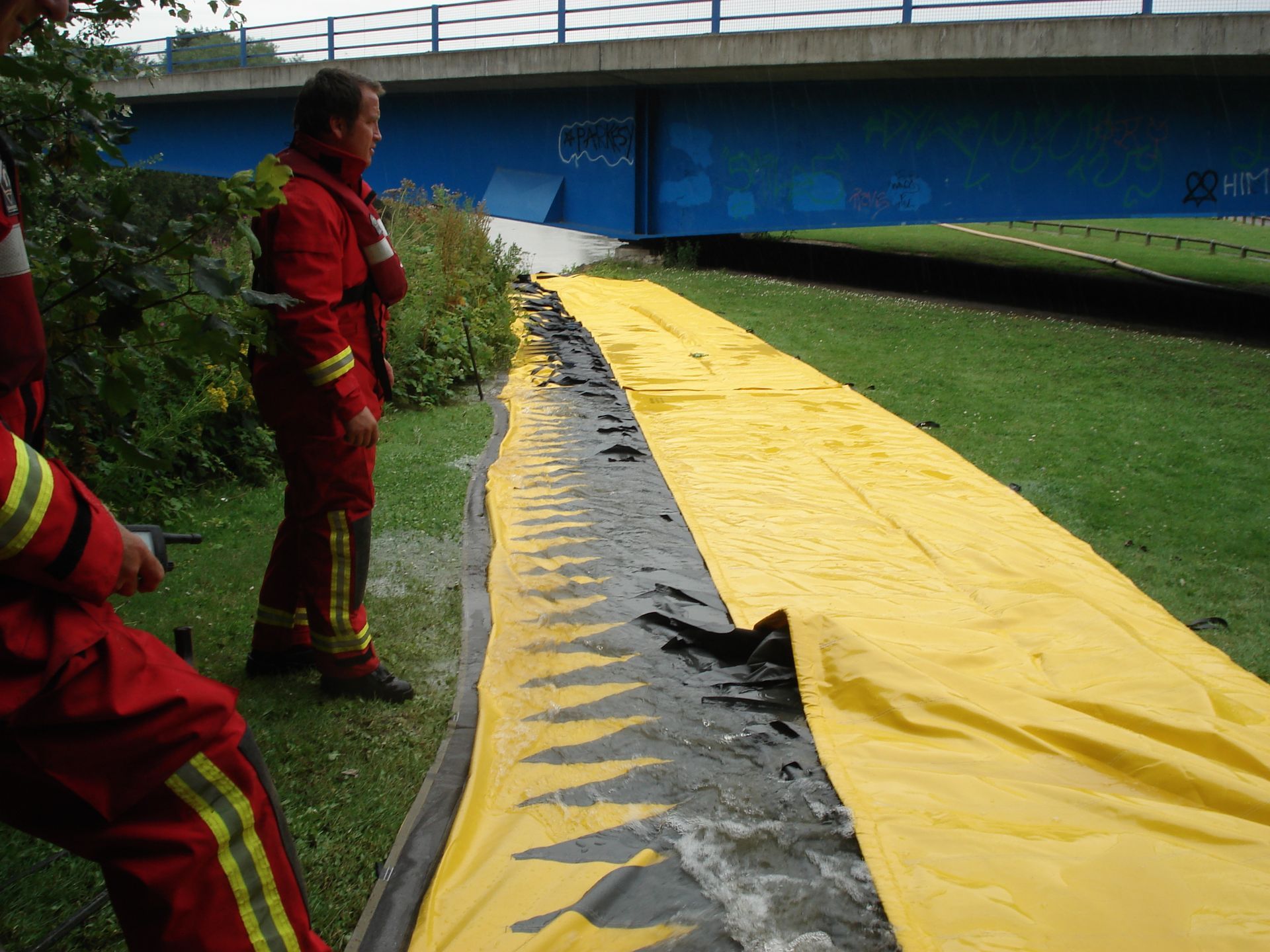
DESCRIPTION: For the ease of describing them, we used the term ‘Airfoil Designs’ because they seem similar to a parachute in design where they raise by themselves as the water level rises. We like this design because they do not require fill material and conform to the ground nicely in creating a seal as the floodwater raises onto the barrier itself.
Pros
- No fill material required
- Seals to undulating terrain nicely without the need for a plastic liner
- Logistically friendly and it compacts down nicely for shipping and storage between uses
Cons
- They are on the expensive side of the flood barrier industry for height achieved
- Because they are shaped like a parachute, high winds can prove problematic without anchoring them down
Soil Filled Flood Barrier Designs
HESCO (or similar)
When it comes to linear miles of flood barriers installed, this product is the most widely used flood barrier in the USA for governmental emergency projects and flood protection projects. This flood barrier has all the other flood barriers beat when it comes to stopping power because it is filled with soil and can be configured to about any height and width.
NOTE: There are suppliers in China who claim to sell ‘HESCO’. HESCO is not manufactured in China and products that come out of this area consistently fall apart in the form of degrading geotextile fabric and weld failure of the wire mesh and is of poor quality. Do not be fooled by suppliers who claim to supply this product by name out of China! This has been a big problem!
Pros
- This is easily the most widely used flood barrier for governmental and commercial applications in the USA
- Most robust flood barrier on the market capable of withstanding debris impact, wave action, debris flows, and the most hostile conditions any flood barrier may be exposed to
- Easily modified to conform to challenging situations
- Flat packs for logistical ease of transport and storage
- Can be stacked to achieve great heights of protection
- Long life span (5 years+)
- This product is extremely versatile for a variety of civil applications beyond flood defense
Cons
- Soil fill is logistically demanding and machinery is required to fill
- Not ideal for urban/residential locations as the filling process can tear up a yard
Flood Defense Landscaping
Defencell
This product can used as a stand-alone flood barrier but, in our opinion, the ability to use this product to reinforce an earthen berm with a long-life span sets it in a category of its own. This product is comprised exclusively of geotextile and therefore, there are no metals or plastics left in the ground. This allows you to build this product, bury it to create an earthen berm that is capable of experiencing overtopping without erosion causing a complete failure should water start cascading down the ‘dry side’ of your barrier.
It is common to use an earthen berm for flood defense, but an earthen berm is not a levee!!!! When an earthen berm is exposed to floodwater, it is common for the soil to become saturated. This can quickly result in erosion/scouring when water is moving laterally along an earthen berm. Additionally, if you have flood water overtop your earthen berm, you can expect the water to quickly erode the soil as it cascades down the dry side of your berm which commonly results in erosion causing a total failure of an earthen berm.
This product can help to stabilize the soil from within your berm against erosion in these situations when exposed to flood water.
COMMON PROTEST – ‘I do not want to lose my view’ (of the ocean, riverfront, or surrounding nature) associated with creating an earthen berm around my property. I also do not want to ‘live in a fish bowl’ by creating an earthen berm around my property. With this product, you can choose to create a low profile earthen berm and if floodwaters are overwhelming, you can build a flood barrier on top of it!!
As a general rule, flood barriers become more expensive as you get taller. For example, a 4’ tall flood barrier can be expected to cost more than twice as much as a 2’ tall flood barrier of the same design which is only half the height. A flood barrier that is twice as high can quickly become more expensive and logistically demanding to purchase, deploy, recover, and store. By incorporating a degree of flood defense landscaping in this manner, you can save time/money/storage space by deploying a lower profile flood barrier on top of a flood defense feature that is landscaped into your property.
GAP CLOSURES and FLOOD DEFENSE LANDSCAPING

Perhaps it is possible to use a soil filled and buried product like Defencell or even raised planter beds to create sections of flood defense landscaping around your property. By doing this, you can also lessen your requirement to purchase/deploy/store flood barriers. For example, you can create a landscaped section of your property where you are not worried about sacrificing your view or the area easily allows for a landscaped flood defense barrier. If you can do this on 1 or 2 sides of your property, you can lessen the cost and logistics of having to deploy flood barriers by 25-50%!! If you are in a flood prone area and/or experience repeated flood events, this can save you a significant amount of heartache over the course of time!
Flood Panel Systems for Doors, Windows, and Oversized Openings
DESCRIPTION: Flood panel systems are in a category of their own and commonly used to protect doors from flooding, protect windows from flooding, or oversized openings such as protecting a garage from flooding. They are also used for key areas like protecting elevators from flooding, power generation areas, and similar infrastructure than you cannot afford to be submerged in floodwater.
These systems are more expensive than traditional, removable flood barriers but do a great job in quickly sealing off a door from flooding (for example).
Generally speaking, we categorize them into two categories which are flood panels that wedge themselves into a door frame like Flood Gate by Quickdams, Dam Easy Flood Panels, or ‘RAPID’ flood barriers and panels that are inserted into pre-mounted brackets that need to be installed by inserting nuts, bolts, or rails into your door frame like the Legacy Flood Panel, RAPID flood barriers, Flood Logs, EZ Panel, or the FRA Panel.
Wedge Systems like Dam Easy, Floodgate by Quickdams, or various RAPID systems
Pros
- No need to modify a standard doorway because it wedges into place
- Dam Easy – Air filled seal (like a bike tire) creates a fabulous seal around most doorways
- These flood panel systems are simple and do not require a additional components to be installed
- They can be linked together to create something more similar to a flood fence with the use of intermittent, removable posts.
Cons
- Most of these barriers are 28” tall and cannot be stacked so if your flood threat is more than 28”, they won’t be tall enough.
- For openings of more than approximately 40”+-, intermittent, removable posts need to be installed which require holes to be drilled into the concrete within the threshold of your door or opening.
NOTE: If you are trying to lower your flood insurance rates, some regulations require you to alter the structure by physically installing the barrier to your home by using bolts or brackets to be considered an ‘improvement to your home’. Because these wedge systems only need to be wedged into a doorway to work, there are no modifications or ‘improvements’ to your home because the barrier is not physically attached to the structure. Therefore, no improvement has taken place. However, you may be able to simply attach a bracket to either side of a doorway, which the barrier is then wedged in between, to constitute an improvement and subsequently be accepted by an insurance provider. This technique, as wall as all information within this review, is up to the reader or end user to investigate or endorse as Flood Defense Group assumes no liability or responsibility for any suggestions or claims made in this review.
Panel Systems like EZ Panel, FRA Panel, Legacy Flood Panel, Flood Logs, and various RAPID systems
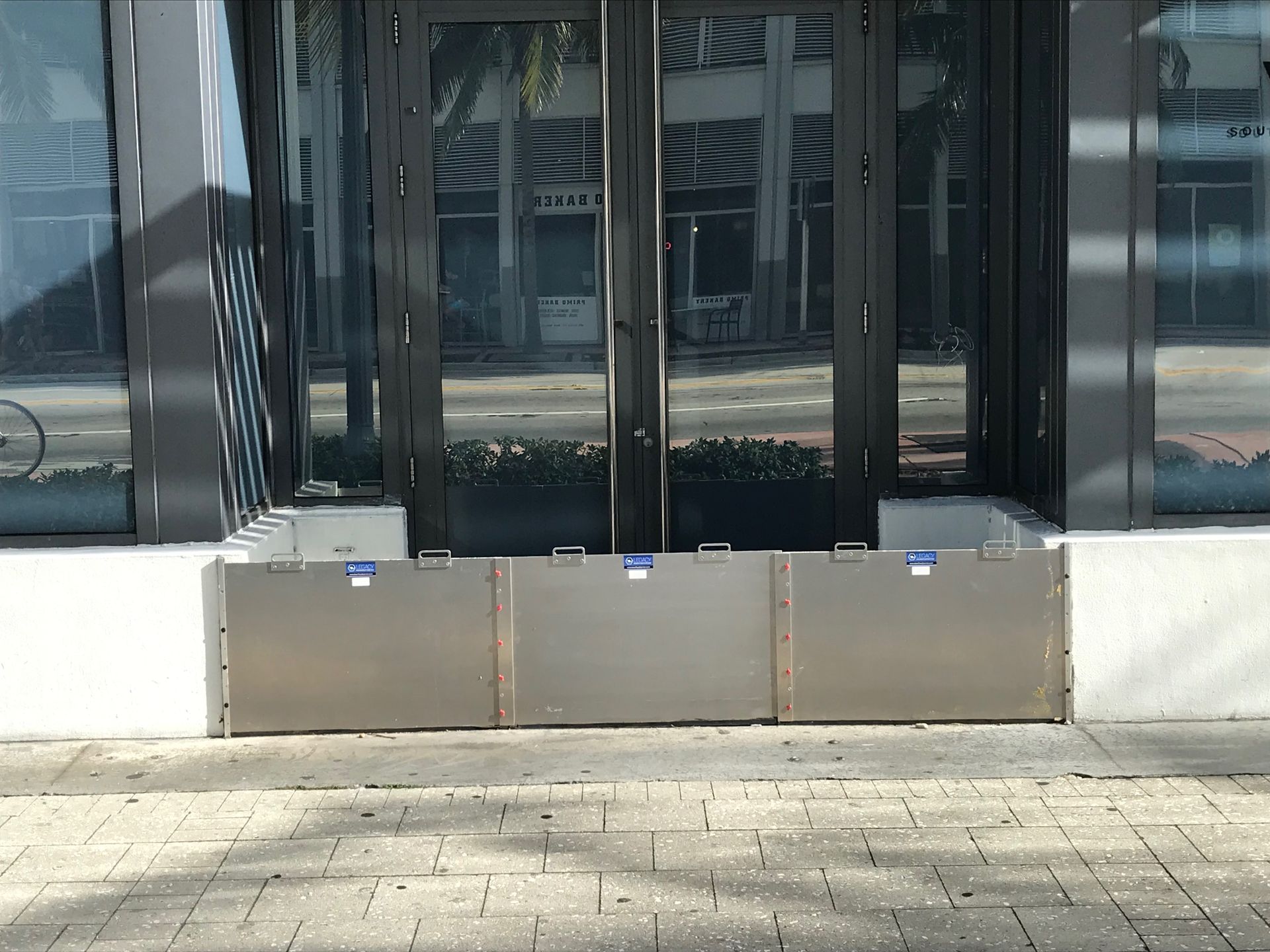
These flood panel systems are comprised of various materials but generally speaking, most of them are made from aluminum panels. These systems can achieve greater heights of protection than most wedge systems and can be stacked to achieve about any height required. They tend to span longer distances, but depending on the depth/width of flood protection required, intermediate, removable upright posts may be required.
Pros
- Generally metal or composite composition with a long lifespan warranty
- Fabricated to the exact size of the opening to be protected
- Easy to install after extraneous bracketry is installed
Cons
- Modification to the structure is required in the form of mounting rails, brackets, or other hardware
- These products are generally more expensive
- Longer lead times are associated with these type systems as they are fabricated specific to the door or opening they are being used to protect
Which flood barriers perform best in the following fields below:
PRICE
Water Filled Flood Tubes – These are generally the least expensive option for flood protection. However, once you get above about 20” of a protective height requirement, the cost savings become more trivial and we find some of our other barriers to be preferable.
HESCO – This soil filled barrier proves to be the least expensive option in achieving greater heights for flood protection which becomes more profound the higher you go.
INSTALLATION SPEED
NOAQ Boxwall, Geodesign Flood Barriers, and Inero Flood barriers – The fact that these products do not have to be filled with any sort of fill material to work makes them among the quickest and easiest to deploy.
ACHIEVING HEIGHT
HESCO (or similar) – This product is the undisputed leader in achieving great heights for flood protection because this product is easily stacked to achieve a desired height.
MUSCLE Wall – When it comes to a removable, and completely reusable flood barrier, the Muscle Wall product takes this category.
REUSABILITY or EASE OF REUSABILITY
For this category, we find most of these barriers to be reusable and find it easier to discuss products that seem to have a diminishing return on the ability to reuse them which would be and of the soil filled barriers like HESCO (or similar), Defencell, and traditional sandbags.
We also believe larger Water Tube systems (20”+ in protective height) are not as easy to reuse and often purported. This is especially true for Water Tube systems that have multiple membrane layers like an outer protective layer and inner tube.
Through the course of use, and reuse, Water Tubes tend to experience punctures (which are generally repairable) and can be heavy to work with due to residual water weight inside between uses. These products often develop small punctures when drug across rough surfaces like concrete, thorny surfaces, and even ‘twiggy’ weeds and grasses that are not soft like sod-type grasses.
Logistics
NOAQ Boxwall, Geodesign Flood Barriers, Inero Flood Barriers, Airfoil Designs and NOAQ Tubewall perform well on the logistic front with a tolerable performance by Water Tubes. This is predominately because they package away well into a small cube as far as storage space and shipping expense.
WATER PUMPS – THE LAST LINE OF DEFENSE
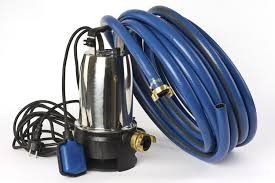
During a flood event, the water table is above the level of the ground the flood barrier is sitting on. Therefore, you can expect water to be working it’s way under any flood barrier. For a quick passing flood event, this is generally not a problem but…..if you are expecting flood water for an extended period of time, you can expect wetness on the ‘dry side’ of the flood barrier. Over time, depending on how much space there is between the flood barrier and the structure being protected, this could prove problematic.
Also, water may be falling from the sky, and draining off your roof which will also start to accumulate. Watch for this and if possible, try to make sure your gutters drain onto the ‘wet side’ of your flood barrier.
Depending on the size of the pump you get, they are generally expensive and worth having if the accumulation of water on the ‘dry side’ of a flood barrier is unacceptable.
Also, if you have to evacuate and the power is likely to go out, it may be worth investing in a generator capable of keeping a pump running while you are away.
DIY Home Flood Protection & Plastic
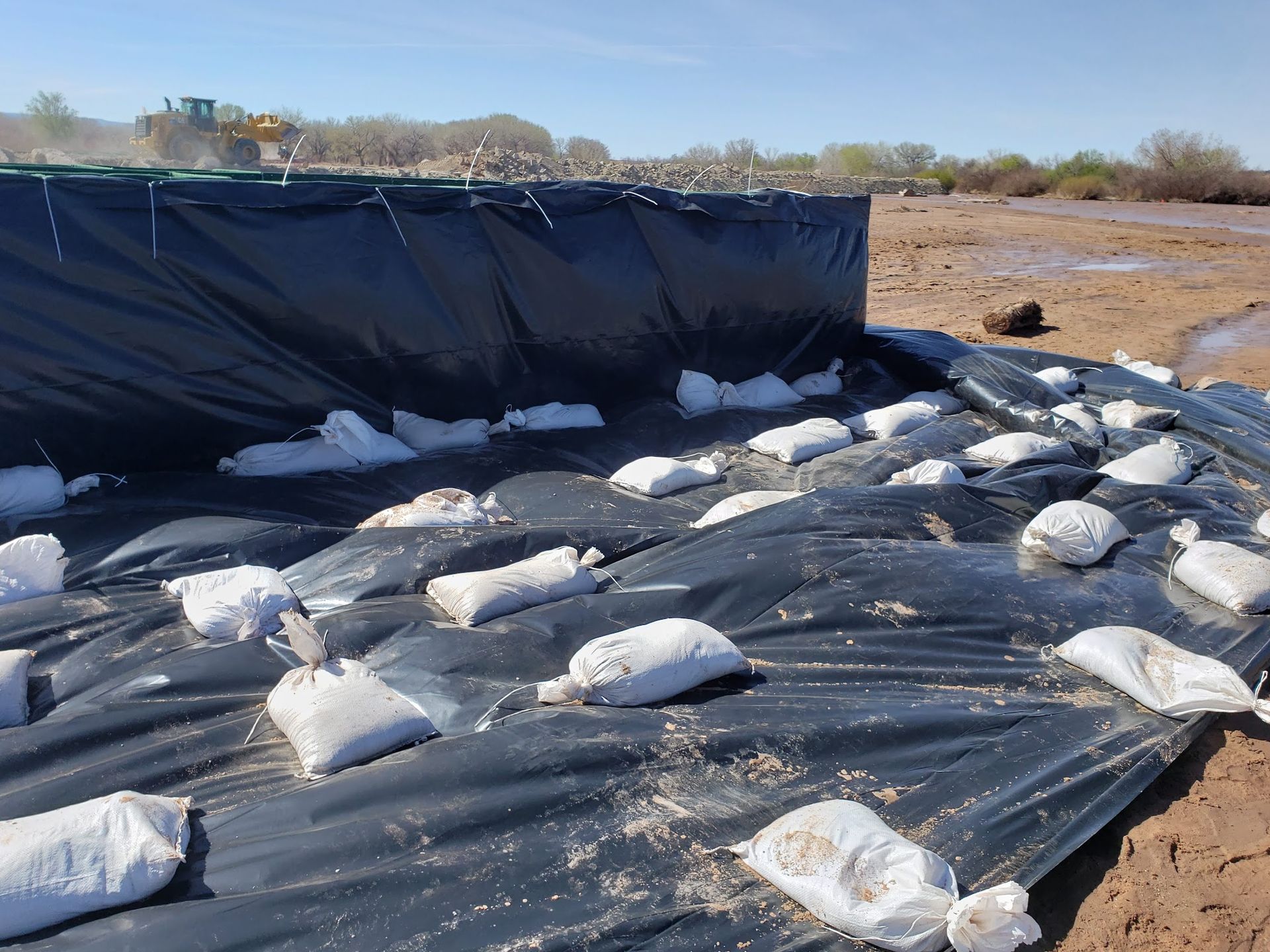
If your home is getting ready to flood and you do not have flood barriers, you still have options for do-it-yourself flood protection!!
This YouTube video below shows how you can cover a flood barrier with plastic to create a water-tight seal against water. However, if you do not have a traditional flood barrier, you can use this same concept and cover about anything with plastic. Your ability to hold the water back will be related to the weight or rigidity of what you are covering with plastic.
For example, let's pretend you only have 10’ wide rolls of plastic to protect your home against 2’ of floodwaters. You can attach the plastic about 3’ up the walls on the outside of your house and this leaves you 7’ of extra plastic which you then lay out on the ground in front of your house. You then must secure this plastic to the ground such that incoming floodwater can get on top of the plastic and not be allowed to get under the plastic. This gives you a 7’ of an impermeable membrane that will drastically slow down the ability of the flood water to seep under barrier and into your home.
DIY flood barriers that you can cover with plastic may include:
- Fences
- A berm of dirt
- ‘A-frame’ wooden structures
- Heavy flower pots, trash cans filled with water
- Straw/Hay bails saturated with water for extra weight
- Even a vehicle
- BE CREATIVE!! IT COULD BE AN EMERGENCY!
IMPORTANT RULE WHEN USING PLASTIC -
Plastic must be against your heavy object or some sort of backing and not be required to support the water weight!! It is only an impermeable layer of protection and it is the weight or rigidity of the surface it is covering that actually stops the water!
Methods to keep plastic secured to the ground or the structure it is attached to may include:
- Lawn staples or turf stakes do well in securing plastic to soft surfaces
- Perhaps cut a line in your grass and shove the plastic under your sod
- Bury it into a trench
- Shovel dirt on it or use sandbags if you have them or perhaps fill socks with sand
- Spray water on top of your plastic after you lay it out for extra weight
- Use 2x4 wooden beam (for example) and screw it into place wherever possible
- Gorilla Tape or Flex Tape is effective
- HINT: Warm it on the dashboard of your car with the heater make it hot so it sticks better
These may not be ideal scenarios but….you can do something and you are simply trying to keep the water away long enough for the flood waters to recede.
HINTS and OPINIONS for DIY Flood Defense with Plastic
- Multiple lines of defense is good! The further away from the structure you can keep the water, the better. This also provides additional room for ‘pooling’ of any water on the ‘dry side’ of your flood barrier and lessens the ability of the water to build up against your home or work it’s way in.
- Is it possible to redirect a significant amount of floodwater before it reaches your home?
- We like to use 100’ rolls of 6mm plastic sheeting which is found at any hardware store
- If you are putting plastic against a house, perhaps use French Drain pipe under the plastic against your structure and a pump so you can remove any water before the pressure of the flood water forces it into your home
- Use ¾” plywood to cover a doorway, cover it with plastic, and use Gorilla tape to secure the plastic to the ground in front of your door and up the side walls. This is generally way more effective than sandbags!!
- HINT: You could use the plastic and tape method to seal your door and then again on a piece of plywood on the outside of the threshold of the door to create an additional line of defense
- Garage doors seem to buckle from the weight of floodwater at about 18” – Be Aware!
CONCLUSION ON DIY FLOOD DEFENSE
As an ex-infantryman, I am a strong believer in multiple lines of defense and if a stupid idea works, it may not be a stupid idea!! Keep the faith and keep fighting!!! It’s not over until it’s over and every little step you can take, may make the difference in keeping your home dry and avoiding the devastating effects of floodwater in your home!!!!!!!
If you have flood vulnerabilities and are interested in feedback specific to your location, we are always happy to help. We want to help, we like to help, and enjoy being considered a source of knowledge and support during a time of need. Whether you are interested in a traditional flood barrier or advice on DIY flood barriers and DIY flood protection during a time of need, we are here to help!!!
Please share this resource with anybody you know who may benefit from reading it and we always appreciate any feedback or online reviews you care to spend the time submitting.
Thanks, and STAY DRY!!!!
Keith Anderson
Flood Defense Group – CEO
keith.anderson@flooddefensegroup.com
1-208-585-1815
DISCLAIMER – This document is written in effort to help people when it comes to flood defense operations. These opinions are put together in good faith out of experience in the field of flood defense but are exclusively up to the end user to endorse or deploy. Flood Defense Group does not assume liability for suggestions, advice, feedback, or the performance of any flood barrier outside of product warranties for defective materials should we supply you with flood barriers.




